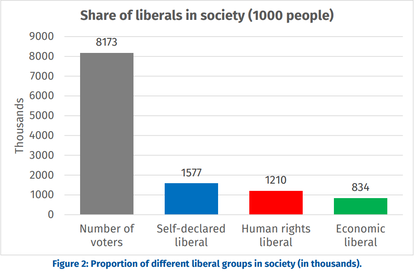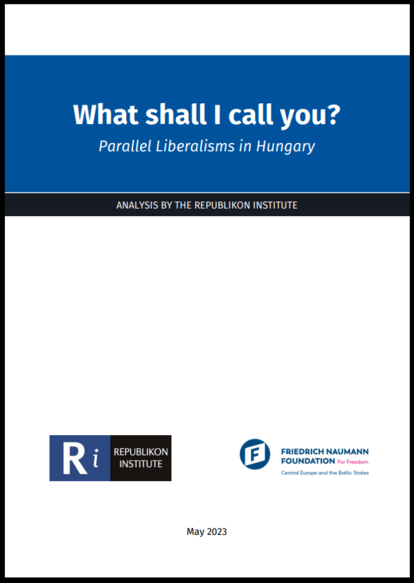Hungary
[PUBLICATION] What Shall I Call You?

A decade ago, the Republikon as an independent institute committed to shed light on the operations of the Hungarian government and promoted democracy with the aid of an analysis of parallel liberalisms. The research categorized Hungarian liberals into three primary groups: human rights, capitalist, and self-proclaimed liberals. In the following research from 2023 titled “What Shall I call you? Parallel Liberalism in Hungary?”, the Republikon Institute, in cooperation with the Friedrich Naumann Foundation, 21 Research Centre, and Political Capital, returns to the question of what liberalism means in Hungary in 2023 after a period of change.
According to the research, 36 percent of Hungarians can be described as liberal: 19 percent as self-declared liberal, 15 percent as human rights liberals, and 10 percent as economic liberals. Thus, it means that 64 percent of Hungarians are not liberal in any respect. Human rights liberals value the protection of individual liberty, self-expression, and minority rights. Economic liberals are essentially capitalists who reject the market influence of the state. Finally, self-declared liberals choose liberalism as their primary worldview from a list of major worldviews.

Share of Liberals in Hungarian Society (1.000 People)
© Republikon IntézetHowever, identifying liberal voters in Hungary goes beyond self-declaration, revealing a significant disparity between those self-identifying as liberal and those classified as such based on their political views. Over two-thirds of self-declared liberals do not agree with any human rights or economic liberal values; thus, they are liberal in name only. It means that the term "liberal" itself is more popular among Hungarians than the actual inclination to liberal values. Liberal self-identifiers are only marginally more active than the population as a whole.
According to the research, liberals can be found rather among young and better-educated people, residing predominantly in urban areas but also in villages. They exhibit higher political participation and hold a better financial status compared to the general population. Interestingly, among liberals, there are also Fidesz-KDNP voters, although the share of Fidesz-KDNP among them is diminishing.
As for the gender distribution, the economic liberalism is male-dominated, while human rights liberalism is female-dominated. In addition, men are overrepresented among self-declared liberals.
The capitalist liberals are the most conservative of the liberal groups. Although few people choose the green worldview first, it is the most widely accepted worldview.
Moreover, the research establishes that liberalism and leftism are intertwined in Hungary, deviating from the Anglo-Saxon, pro-market model. Hungarian liberalism is characterized as a unique, left-wing liberalism, combining post-socialist roots with a 21st-century aspiration for freedom. It embraces values such as collectivism, equality, social security, free market, European integration, and protection of minority rights.
As for the actual political situation in Hungary, the liberal, green, and pro-European party Momentum (ALDE party member), which emerged as a grassroots movement against illiberalism, has experienced a significant surge, two to three times higher in the liberal group than in the overall population.
Read the whole publication here.

